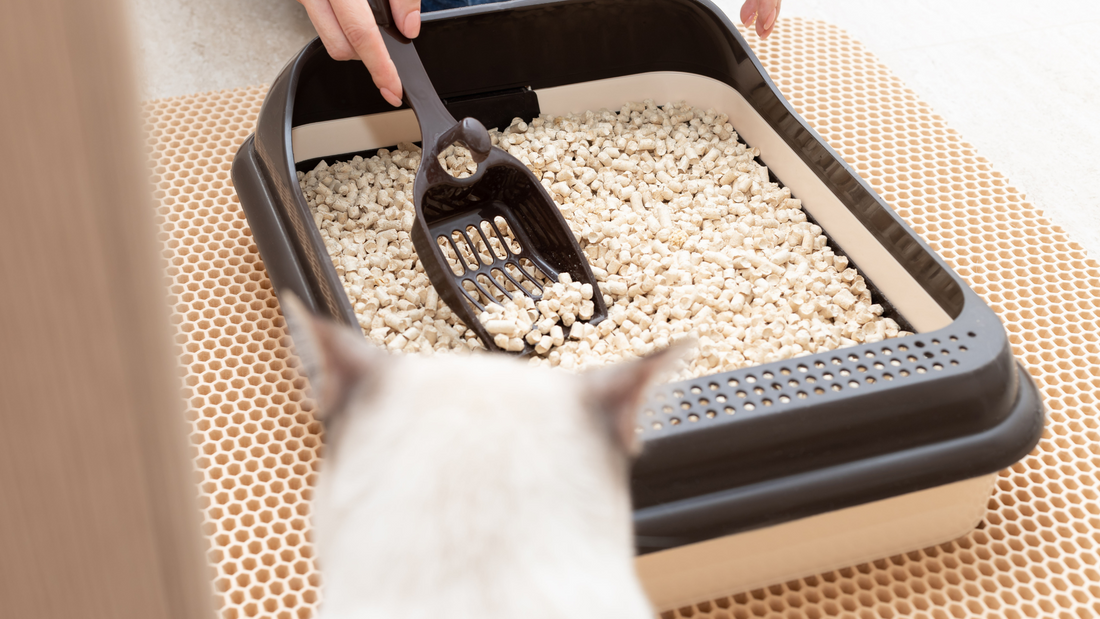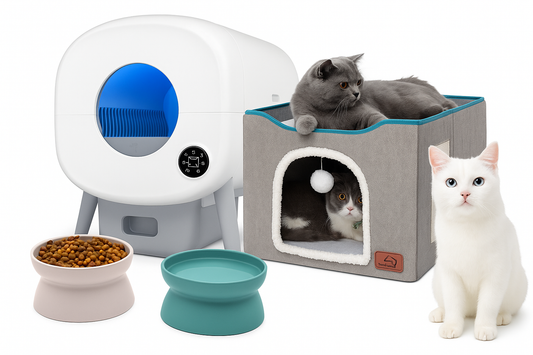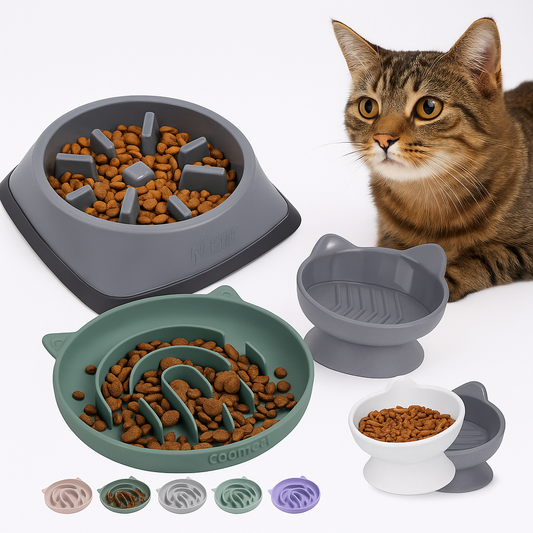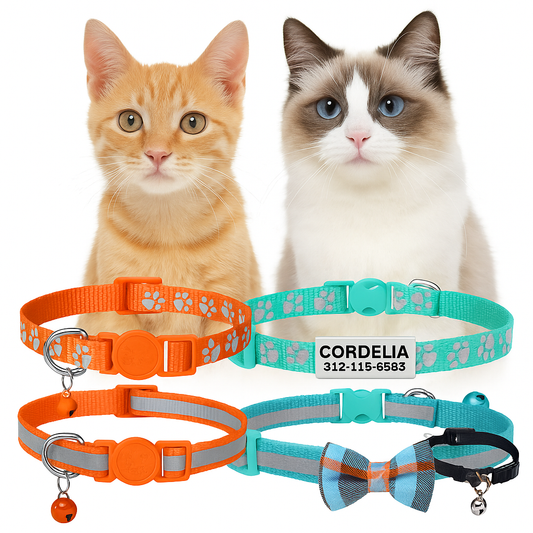
How Often Should You Really Clean the Litter Box?
Why Litter Box Hygiene Matters (It’s More Than Just the Smell)
Let’s be honest: scooping cat litter isn’t the most glamorous part of having a cat. But you love your fluffy loaf, and keeping their bathroom clean isn’t just about preventing your apartment from smelling like a bus station—it’s about your cat’s health, happiness, and trust in you.
Cats are naturally clean. A dirty litter box can turn your affectionate purring roommate into a resentful little gremlin who decides your laundry basket is a better option. It’s not spite; it’s survival instinct. They don’t want to step on a filthy toilet either.
What Happens If You Don’t Clean It?
A grimy litter box can:
- Cause urinary tract infections (UTIs) due to bacteria buildup.
- Trigger respiratory issues from ammonia fumes (yes, even in humans).
- Lead to parasite infections like Toxoplasma gondii.
- Make your cat avoid the box entirely (hello, surprise puddles on your bed).
Cats associate their litter box with safety and routine. If that space becomes unpleasant, it can stress them out, leading to health and behavioral issues you definitely don’t want to deal with.
Factors That Determine How Often to Clean a Litter Box

While the general advice is daily scooping and weekly deep cleaning, how often you need to clean your cat’s litter box depends on a few real-world factors:
1️⃣ How Many Cats You Have
The golden rule:
🐈 One litter box per cat, plus one extra.
- One cat: One or two boxes cleaned daily.
- Two cats: At least three boxes, scooped twice a day.
- Three cats: Four boxes, scooped multiple times a day.
More cats = more pee clumps, more poop, and faster odor and bacteria buildup.
2️⃣ Type of Litter You Use
- Clumping litter: Easier to scoop daily, full change every 1-2 weeks.
- Non-clumping litter: Needs more frequent full changes (often every few days).
- Crystal litter: Absorbs moisture but still needs solid waste removed daily.
If you’re unsure which litter is best for your cat or your cleaning style, check out our Ultimate Guide to Cat Litter: Clumping, Crystal, and Natural Options. It breaks down each type, their pros and cons, and which cats (and cat parents) each option suits best, so you can find a litter that makes cleaning easier while keeping your cat happy.
3️⃣ Type of Litter Box
- Manual boxes: Need daily scooping, weekly washing.
- Automatic self-cleaning boxes: Reduce scooping but still need emptying and a full clean weekly.
- Covered boxes: Trap odors, so they require more frequent scooping despite the illusion of no smell.
If you’re not sure which type fits your cat’s preferences and your cleaning style, check out our Best Cat Litter Boxes for Every Cat Personality. We break down which boxes work best for shy cats, high-energy diggers, seniors, and multi-cat households, so you can pick a litter box that makes maintaining a clean bathroom space easier for both you and your cat.
4️⃣ Your Cat’s Preferences
Some cats are picky. If your cat starts avoiding the box, increase cleaning frequency. A sensitive senior cat or a kitten in training may need even cleaner conditions.
The Best Cleaning Routine for Litter Box Maintenance

Here’s a practical “Goldilocks” litter box cleaning routine:
🗓️ Daily: The 5-Minute Scoop
- Remove solid waste and clumps at least once daily (twice is better).
- Top up fresh litter to maintain a 2-3 inch depth.
🧼 Weekly: Deep Clean
- Empty all litter into a trash bag.
- Wash the box with warm water and mild dish soap.
- Rinse thoroughly and dry completely.
- Add fresh litter.
Tip: Avoid bleach and ammonia cleaners as they can leave residues harmful to your cat.
🧽 Monthly: Super Deep Clean
- Scrub with a vinegar-water solution to remove mineral buildup.
- Inspect for scratches or cracks in the plastic (these trap bacteria).
- Replace the litter box every 1-2 years.
Signs Your Litter Box Needs Cleaning More Often
Your cat will tell you if you’re slacking on cleaning (often in ways you don’t like). Watch for:
- Refusing to use the litter box
- Excessive scratching around or outside the box
- Poo or pee outside the box
- Strong ammonia smell near the box
- Wet or sticky litter when scooping
If any of these happen, increase your cleaning frequency immediately.
Cat Litter Maintenance Tips for a Fresh, Happy Home
✅ Choose the Right Litter
- Use unscented clumping litter for easy scooping and odor control.
- Avoid heavily scented litters that may deter your cat.
- If your cat tracks litter everywhere, try low-dust or larger granule litter.
✅ Use Litter Mats
Place a litter mat under the box to catch stray litter from your cat’s paws.
✅ Try Baking Soda
Sprinkle a thin layer of baking soda at the bottom of the box before adding litter. It helps neutralize odors naturally.
✅ Location Matters
Place the litter box in a quiet, easily accessible spot. Avoid areas near food and high-traffic locations.
How Often Should You Clean a Litter Box in a Multi-Cat Household?

In multi-cat homes, litter box hygiene is even more critical.
- Scoop at least twice daily.
- Full litter replacement every 1-2 weeks.
- Clean accidents immediately to avoid territory disputes.
Pro tip: Cats can refuse to use a box that another cat has used if it isn’t cleaned often enough, leading to turf wars you don’t want.
Avoid These Common Litter Box Mistakes
1️⃣ Using Strongly Scented Litters – Many cats dislike heavy fragrances and will avoid the box.
2️⃣ Using Harsh Chemicals – Stick to mild soap or vinegar; strong chemicals can irritate paws and respiratory systems.
3️⃣ Not Enough Litter Boxes – One box is not enough for multiple cats.
4️⃣ Ignoring Liner Preference – Liners may make cleaning easier for you, but some cats hate them.
The Environmental Impact of Cleaning Your Cat’s Litter Box
Want to be eco-friendly while maintaining litter box hygiene?
- Use biodegradable or compostable litter (paper, corn, wood).
- Never flush cat litter (risk of plumbing and environmental contamination).
- Use a metal or reusable scoop instead of disposable liners if your cat tolerates it.
FAQs: Your Litter Box Cleaning Questions Answered
How often should I really scoop the litter box?
Once daily for a single cat, twice daily for multiple cats is ideal.
Can I skip a day of cleaning?
Technically yes, but your cat may punish you by using your laundry as a toilet.
How often should I fully replace the litter?
Every 1-2 weeks, depending on odor, clumping ability, and usage.
What happens if I don’t clean the litter box regularly?
Ammonia odor, bacterial buildup, cat stress, UTIs, respiratory issues, and bathroom accidents around your house.
Can I use essential oils around the litter box for odor?
No. Most essential oils are toxic to cats and should be avoided.
What’s the best litter box for odor control?
Covered boxes trap odors but need more frequent cleaning. Self-cleaning boxes help but still require weekly washing.
How can I reduce litter tracking?
Use a litter mat, low-tracking litter, and keep the litter at the right depth.
Conclusion: Build a Sustainable Cleaning Routine Your Cat Will Love
Here’s the bottom line: if you don’t like using a dirty bathroom, neither does your cat. Daily scooping, weekly washing, and monthly deep cleaning will keep your litter box fresh, your cat happy, and your home free of lingering litter box odors.
Maintaining good litter box hygiene also helps you monitor your cat’s health—sudden changes in clump size, color, or frequency can be early signs of health issues.
🎯 Your 5-Minute Action Plan:
✅ Scoop daily (twice if you can).
✅ Full wash weekly.
✅ Deep scrub monthly.
✅ Replace the box every 1-2 years.
Your cat will thank you (in their own way) with purrs, headbutts, and fewer unpleasant surprises around your home.
Want More Cat Care Wisdom?
Capnip is here to help you become the best cat parent you can be, with practical, real-world guidance on cat behavior, health, and enrichment. Bookmark us and check back for guides that make your life with cats easier, healthier, and happier.
Explore related reads:
- Top 10 Cat-Safe Indoor Plants
- Why Your Cat Is Peeing Outside the Box
- Minimalist Cat Parenting: Clean, Calm, Claw-Friendly



